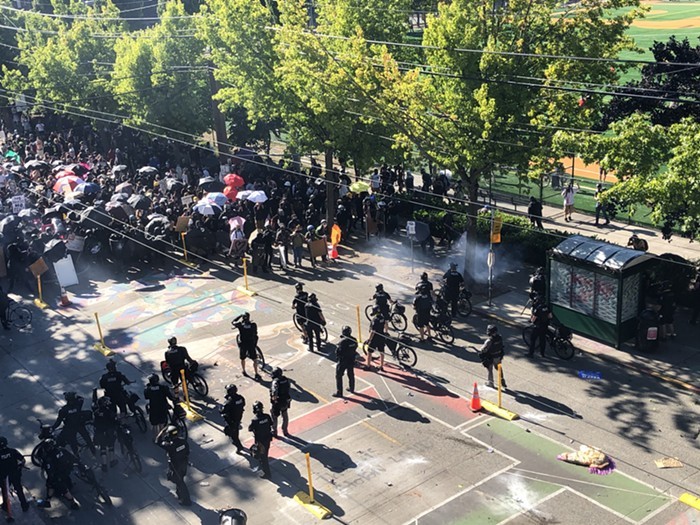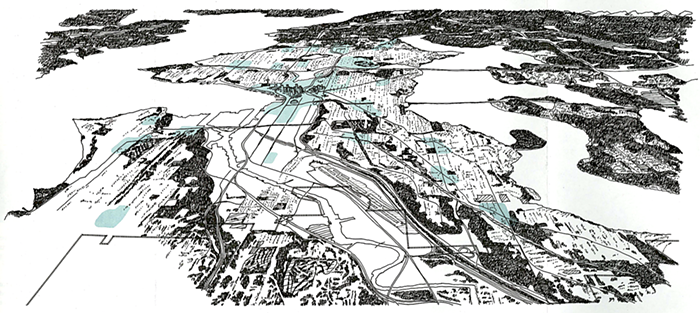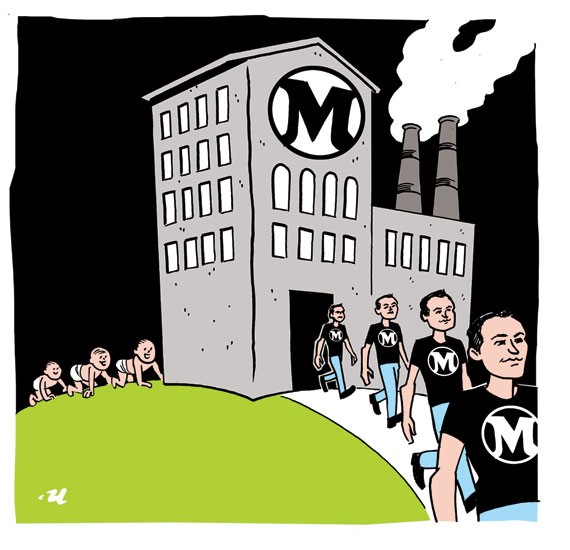
The global COVID-19 pandemic is having one very clear effect in the Seattle area: our local governments are rushing to expand housing opportunities for the homeless. The city is expanding and building new tiny house villages and setting up makeshift shelters on city property. Meanwhile, the county builds three new coronavirus quarantine sites and purchased a Kent motel last week.
The first guest to the county's new motel checked in yesterday, a homeless person with COVID-19 symptoms, while the county plans to open its newest quarantine site, a location in Bitter Lake with modular housing units, today, according to Alex Fryer, a spokesperson with the county. The county’s quarantine site in White Center, which has drawn opposition from the local community, is not yet open.
“The White Center site is expected to come online in the coming days,” Fryer said in an e-mail Wednesday.
Lawyers for the county argued in court Wednesday that the government is preparing for a surge in people needing quarantine sites because COVID-19 may infect more than 1,000 people experiencing homelessness in the Seattle area, according to the Seattle Times. The disclosure came in a court hearing where the city of Kent is trying to block the county’s use of the motel as a quarantine site.
The city’s efforts are focused on providing housing for people who may fall ill with the flu-like virus but are not currently experiencing symptoms. The city’s effort so far has included a new tiny house village on Cherry Street in the Central District, an expansion of an existing tiny house village in South Lake Union, the conversion of a treatment facility in Bitter Lake into housing, and the temporary use of the Seattle Center’s Exhibition Hall as a shelter. The city expects these combined efforts to house around 100 people.

Contractors broke ground on the Central District’s new tiny house village on Tuesday morning and will have the site set up by next month, according to Bradford Gerber, a manager with The Low Income Housing Institute (LIHI), which manages 11 tiny house villages in the Seattle area.
“Usually it takes 2 months to set these up,” Gerber said Tuesday. “This process will take about 3 weeks—it’s an expedited construction process.”
The tiny house village sites will not be used for quarantining individuals infected with the coronavirus, called COVID-19. Instead, it will house people who are considered at a higher risk for infection.
“It’s not like people who test positive for coronavirus will be moving into this site,” Bradford said, speaking at the Cherry Street location on Tuesday. “It will be a mixture of some people who are very high vulnerability but are outdoors or who might be in other shelters that could be at risk of infection or if they got an infection would be a little bit more intense for them.”
The new tiny house village has been approved through 2020 but it will need to be approval to continue beyond 2020. Bradford said the village will likely fill up quickly.
“The need is essentially infinite,” Bradford said. “So this is unfortunately still just a drop in the bucket that is 11,000 or more people that are homeless in January.”
Daniel Malone, the executive director of the Downton Emergency Services Center, a busy shelter in Pioneer Square, said the COVID-19 crisis shows how the region should have already been providing housing to the homeless.
“Now with this chance occurrence with a worldwide health pandemic, it’s that much more difficult for us to deal with it because it comes on top of this homelessness situation that we had failed to account for,” Malone said. “I don’t mean to suggest that our local governments haven’t been working hard on these issues but we haven’t managed to come together with a full comprehensive plan.”













